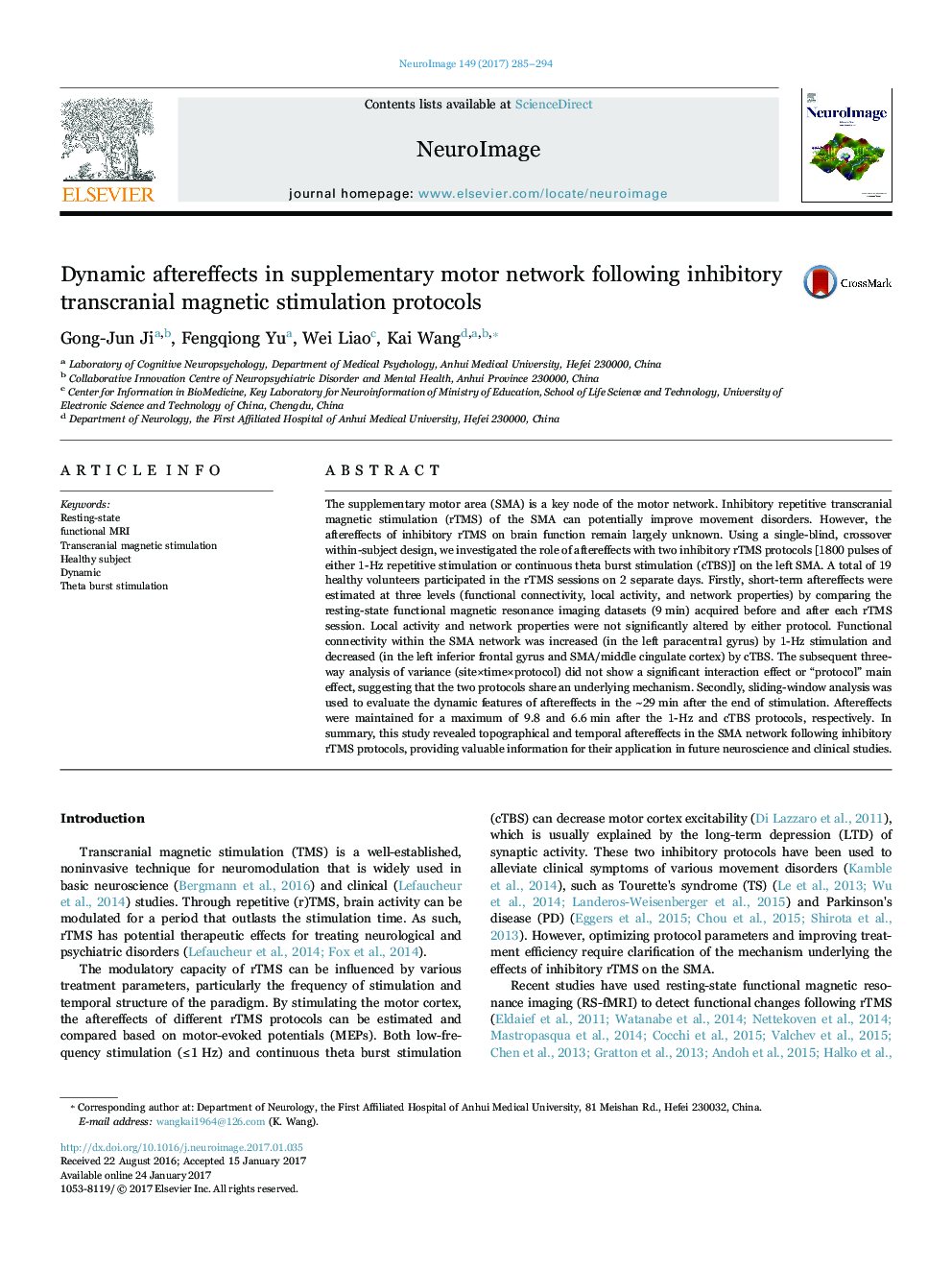| کد مقاله | کد نشریه | سال انتشار | مقاله انگلیسی | نسخه تمام متن |
|---|---|---|---|---|
| 5631253 | 1580861 | 2017 | 10 صفحه PDF | دانلود رایگان |
- 1Â Hz and continuous TBS can modulate the function of SMA network.
- 1Â Hz repetitive TMS increased the functional connectivity of paracentral gyrus.
- Continuous TBS decreased the functional connectivity of IFG, SMA/MCC.
- The two protocols show similar effective time (~10Â min) after the end of stimulation.
The supplementary motor area (SMA) is a key node of the motor network. Inhibitory repetitive transcranial magnetic stimulation (rTMS) of the SMA can potentially improve movement disorders. However, the aftereffects of inhibitory rTMS on brain function remain largely unknown. Using a single-blind, crossover within-subject design, we investigated the role of aftereffects with two inhibitory rTMS protocols [1800 pulses of either 1-Hz repetitive stimulation or continuous theta burst stimulation (cTBS)] on the left SMA. A total of 19 healthy volunteers participated in the rTMS sessions on 2 separate days. Firstly, short-term aftereffects were estimated at three levels (functional connectivity, local activity, and network properties) by comparing the resting-state functional magnetic resonance imaging datasets (9Â min) acquired before and after each rTMS session. Local activity and network properties were not significantly altered by either protocol. Functional connectivity within the SMA network was increased (in the left paracentral gyrus) by 1-Hz stimulation and decreased (in the left inferior frontal gyrus and SMA/middle cingulate cortex) by cTBS. The subsequent three-way analysis of variance (siteÃtimeÃprotocol) did not show a significant interaction effect or “protocol” main effect, suggesting that the two protocols share an underlying mechanism. Secondly, sliding-window analysis was used to evaluate the dynamic features of aftereffects in the ~29Â min after the end of stimulation. Aftereffects were maintained for a maximum of 9.8 and 6.6Â min after the 1-Hz and cTBS protocols, respectively. In summary, this study revealed topographical and temporal aftereffects in the SMA network following inhibitory rTMS protocols, providing valuable information for their application in future neuroscience and clinical studies.
Journal: NeuroImage - Volume 149, 1 April 2017, Pages 285-294
